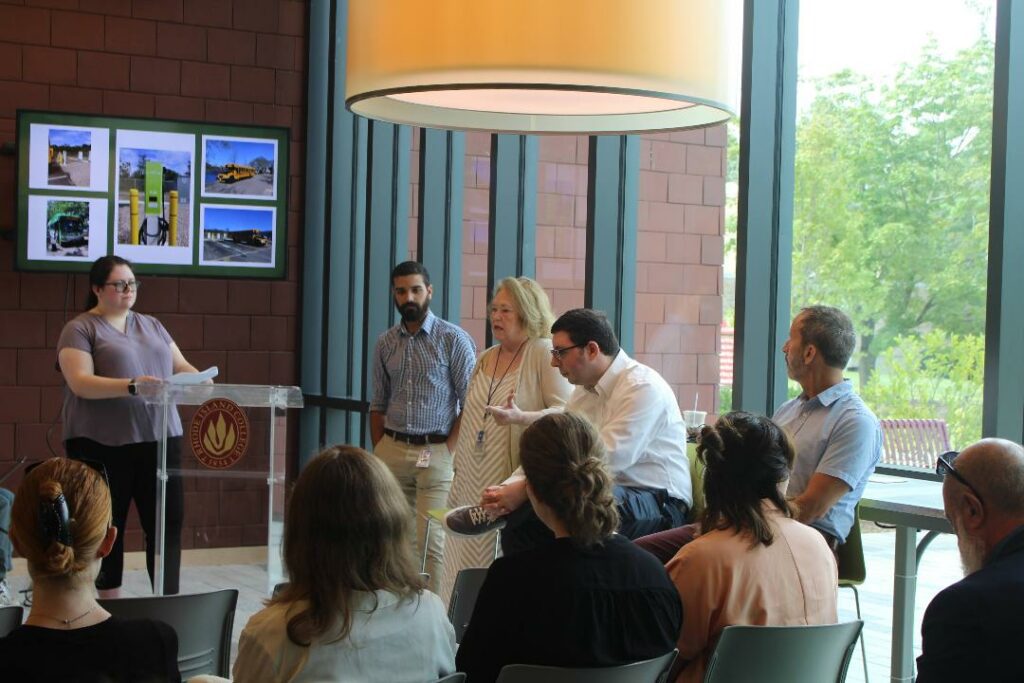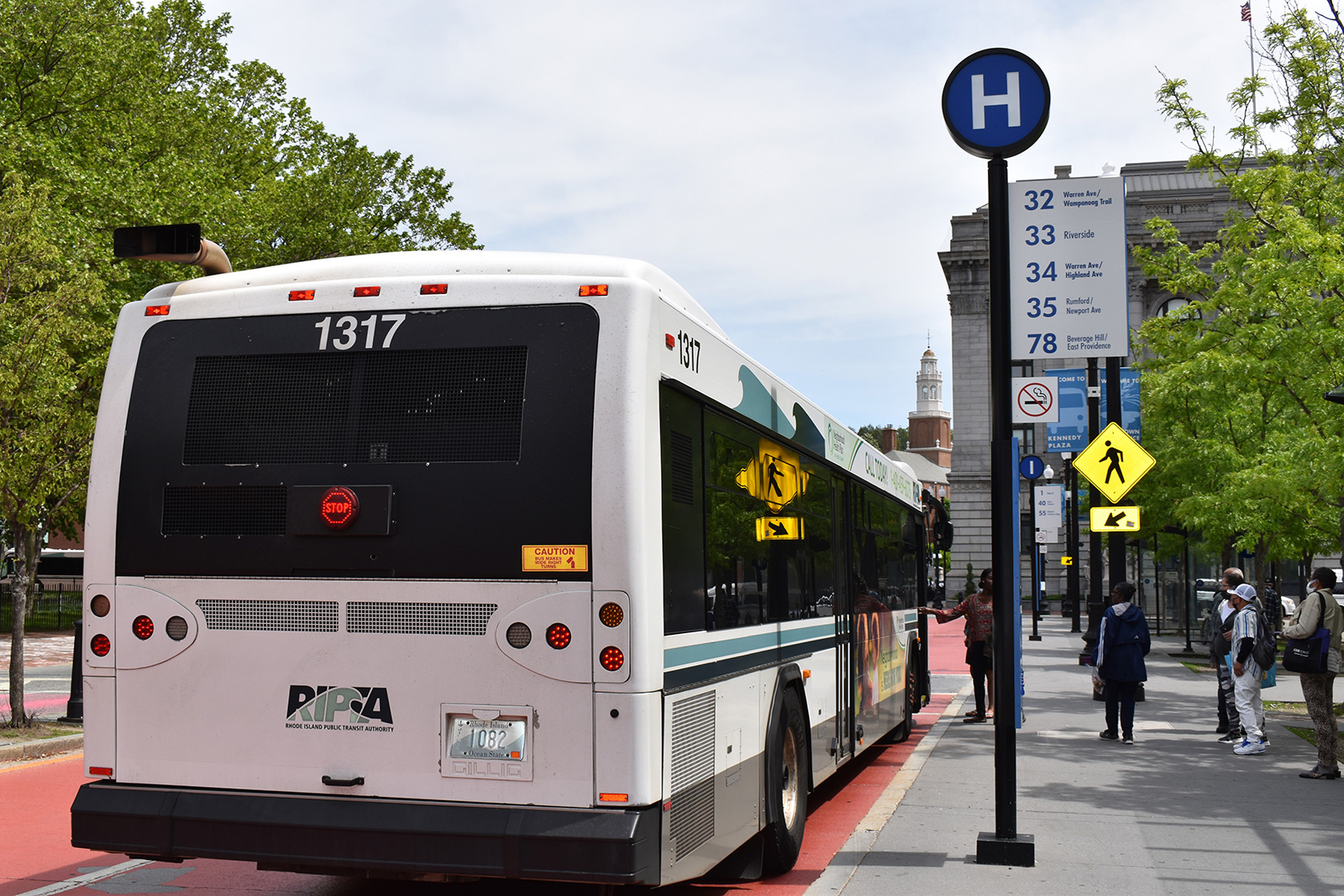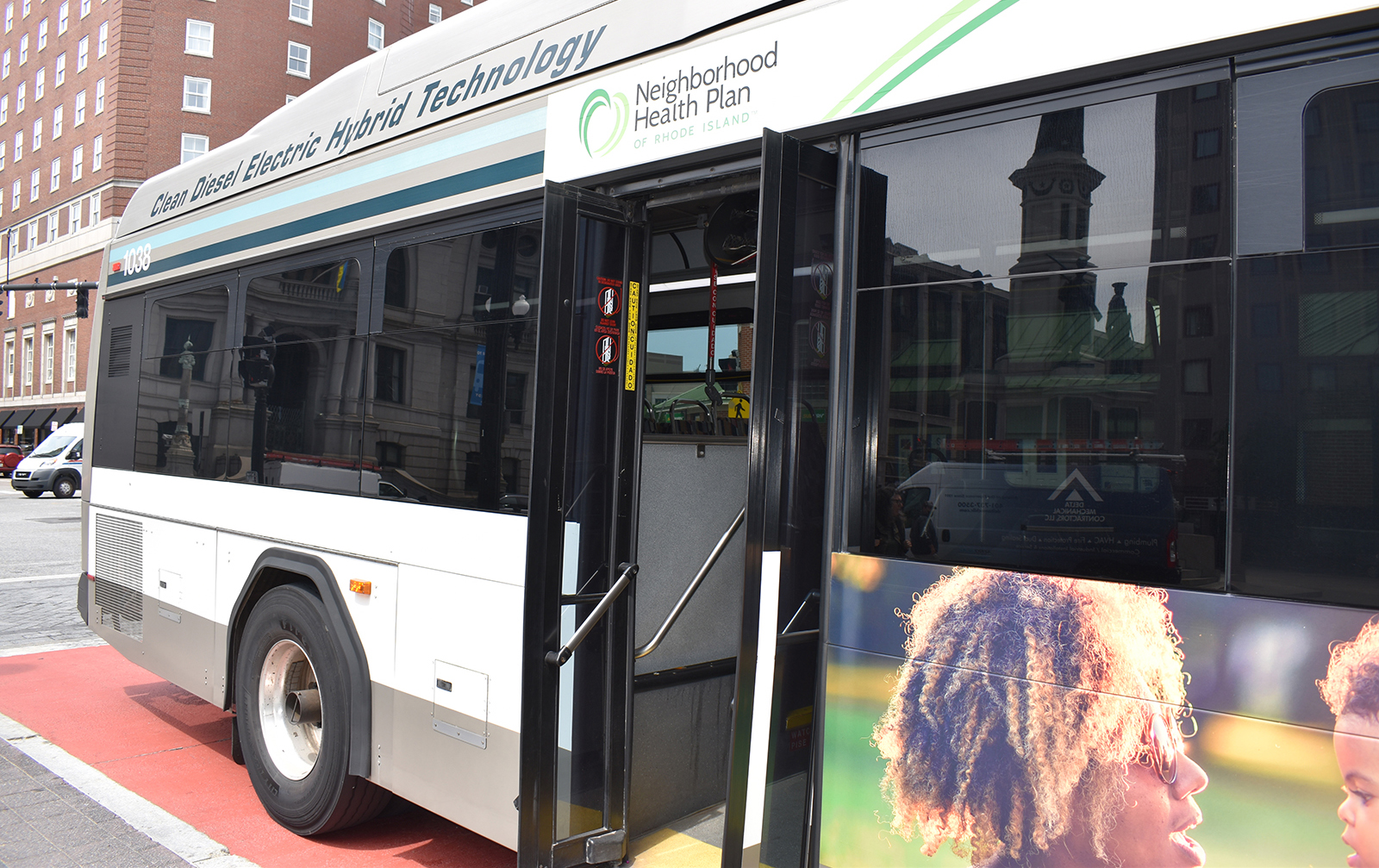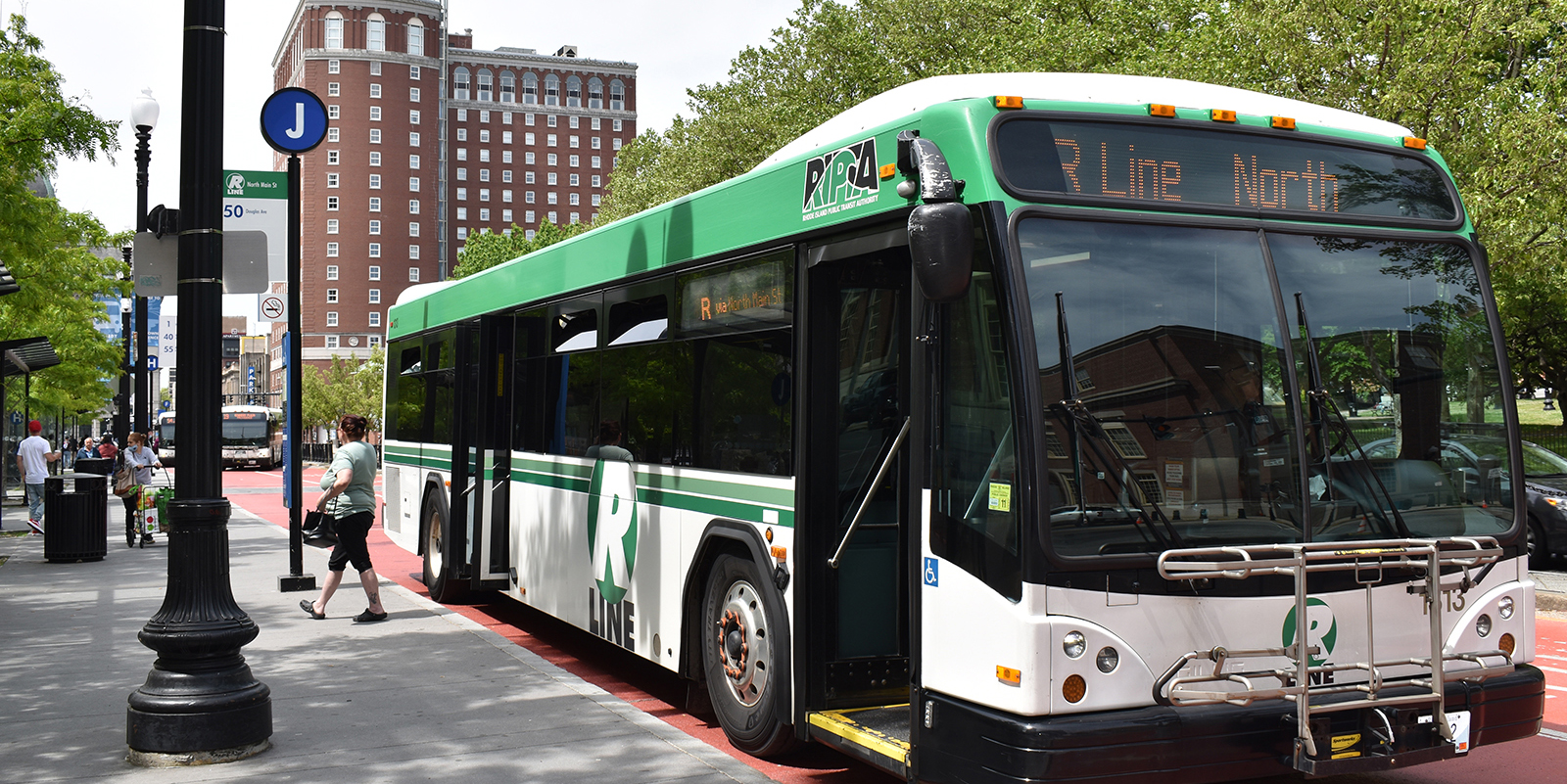From ‘Stinky’ to Smooth: Electric School Buses Come with Challenges and Triumphs
August 13, 2023
PROVIDENCE — The group, lined up alongside a big school bus, marveled at the yellow chariot. They had been waiting all morning to climb aboard. As the passengers filed in and the driver turned the key, the machine beeped like a robot, then the engine started to hum like a cicada.
“That’s it,” the driver said.
“Wow,” several passengers said.
The Westerly school bus that idled in front of Rhode Island College’s Horace Mann Hall on Thursday stood out for two reasons: its passengers that morning weren’t schoolchildren but educators and environmentalists; and instead of a roaring diesel engine, it vibrated quietly with electricity.
Westerly officials and their bus had made the trip up north for an event hosted by the Rhode Island Department of Environmental Management to discuss the difficulties and benefits of transitioning away from the traditional gas- and diesel-guzzling, canary-colored beasts toward electrical buses.
Before the bus tour began, Michael Healey, DEM’s chief public affairs officer, spoke to the group about the studied harms of diesel emissions on air quality and children’s health.
“The best way to keep our children healthy and improve the air they breathe is by switching our fleets to zero-emission school buses,” he said. “The last thing we want is for our kids and for our bus drivers to be riding to and from school, five days a week, on antiquated — and here’s an official term — stinky buses that burn diesel exhaust.”
Westerly Public Schools officials had been inspired by the public health impacts to begin the switch to electric buses, according to district transportation director Susan Guarino.
“We knew it was the right thing to do, and somebody’s got to take the stand and get it done,” said Guarino, noting the district started looking into e-buses in 2019.
From there, she said, it took a lot of time, organizing, and funding to get the transition going.
Electric school buses are about four times more expensive than diesel- or gas-fueled vehicles, which cost about $100,000 each. They also require the installation of a charging station and adding and upgrading infrastructure.
Westerly’s two electric buses went into operation at the beginning of the last school year.
After a year of use, Guarino said the district has worked out a lot of the kinks that come with using a new technology.
The advertised range of their buses is 120 miles — versus up to 500 miles for a diesel bus with a full tank — but Guarino said in practice it tends to be much less. Driving the roughly 40 miles to Providence from Westerly that morning took about half a charge, she said, in part because it was hilly and that takes more out of the battery.
Cold weather also drains the charge because the bus has to use some energy to keep the battery warm.

Over the school year, the district learned there are tricks that can help the drivers use the buses more efficiently and that training them to take advantage of features like re-charging on braking has been important.
Diesel Emissions Reduction Act (DERA) grants partially paid for Westerly’s two buses, and a National Grid grant that no longer exists covered almost 100% of the infrastructure and 75% of the chargers for the project.
For school districts interested in pursuing bus electrification, $5 billion will be available over the next five years to start building cleaner fleets, according to Gary Rennie from the Environmental Protection Agency.
Guarino did caution that after the initial investment, spending on electricity to power the buses is expensive, in part because Rhode Island Energy does not have time-of-use electricity plans, which make using electricity cheaper during low-usage hours. If Westerly could charge their buses at night when less electricity is being used and be charged a cheaper rate, it would save them money, she said.
The district is also working with the company Nuvve, which creates technology that would allow charged buses to give unused energy back to the grid for a cost savings, but its implementation has hit some roadblocks.
Despite the challenges, Guarino said starting to transition to e-buses was the right move and that kids, parents, and drivers really love them.
The bus doesn’t have a tail pipe, which many of the Aug. 10 adult passengers noticed, and it doesn’t produce the dark smoke or industrial smell that usually comes with the arrival of a bus.
It’s also quieter than a diesel vehicle, though it has an artificial hum for safety purposes so that children can still hear it as it approaches.
Guarino said there was a middle school route that had been giving one of her drivers some trouble.
“We have some issues with the middle school; they can’t help it, they’re 13,” she said.
But since the quieter electric bus started on the route, she noticed the driver wasn’t writing students up anymore for disciplinary issues. The driver said she thought that the kids had been better behaved because they loved the quieter, cleaner bus, and didn’t need to raise their voices over the sound of the engine as much.
The two drivers who use the electric buses in Westerly “don’t want to give them up for anything,” and parents love seeing the buses pull up at their stop, Guarino said.
“We’re thrilled and we’re not going to stop,” she told the audience, which included some interested school districts. “This fleet will be all electric. Not in my lifetime, but it will, it will. We’re going to keep going.”




Thanks. Lots of interesting info in here to think about.